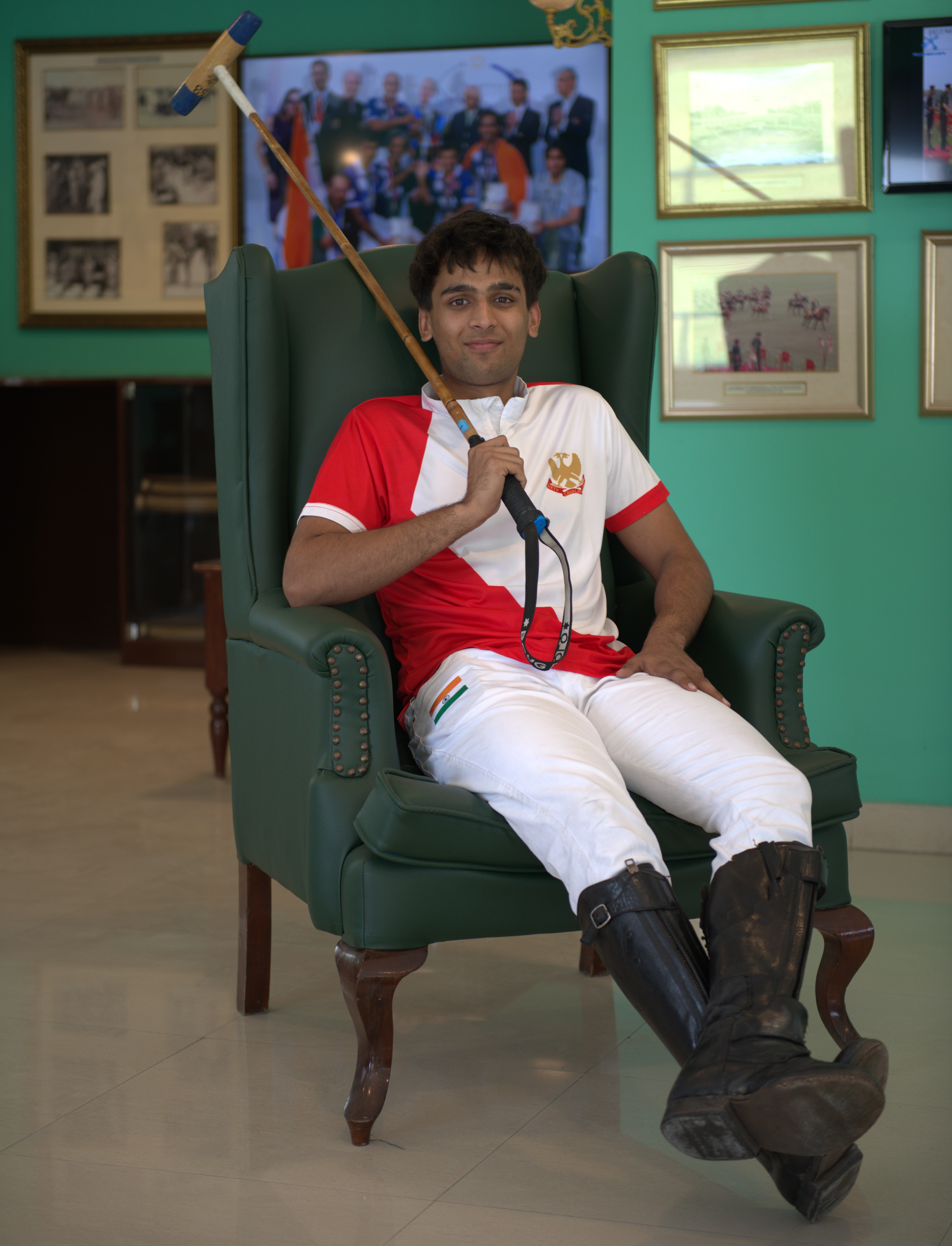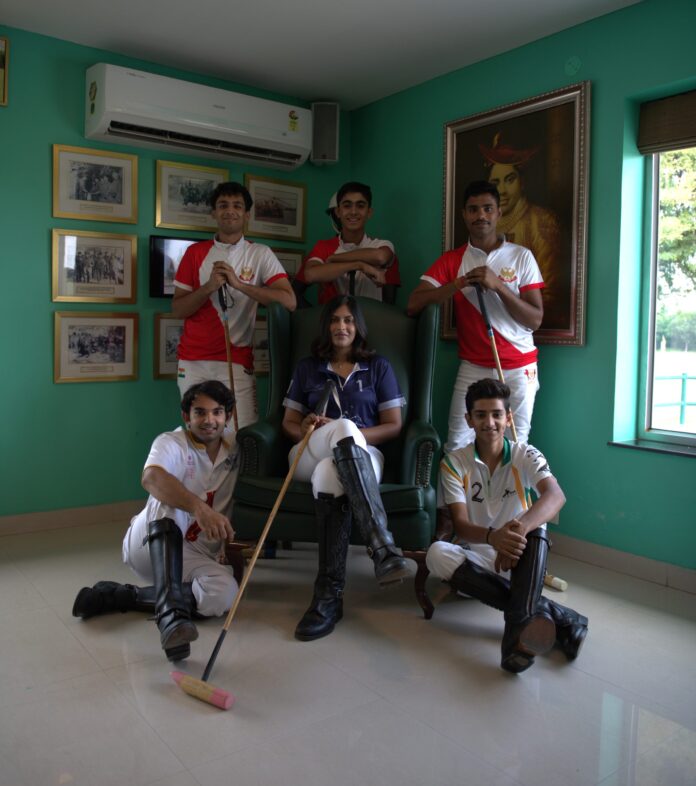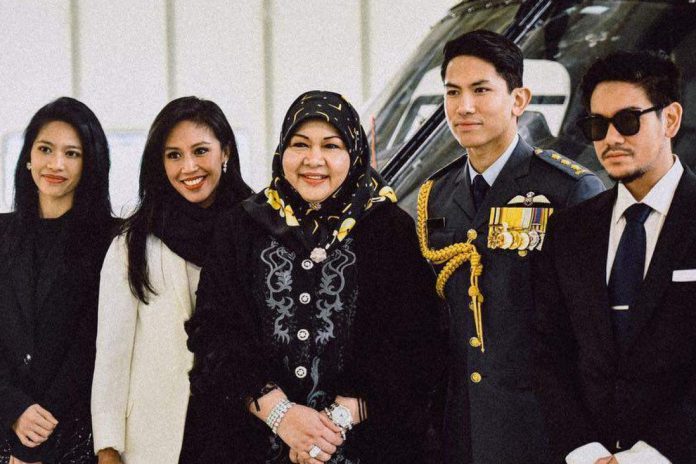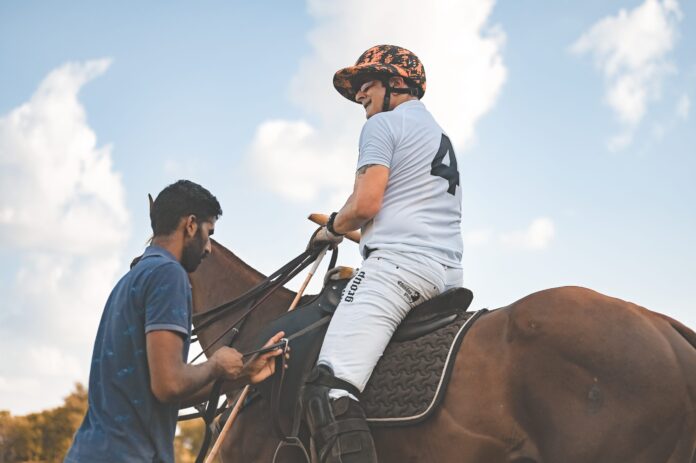Since time immemorial, Polo has exuded a regal charm. It might have to do with the patronage that the sport has enjoyed among the ruling class. The reason for the sport’s popularity, especially among royals, has been linked to the mental and physical challenges involved in the game. In pre-modern times, it was thought of as a simulating past-time for the warrior class that challenged players to rapidly adapt to the ever-changing conditions on the field. It was believed that being well-versed in Polo was highly beneficial in fine-tuning a soldier’s cavalry skill, eventually forming part of royal education in many kingdoms. So for centuries, young people have been credited with keeping the legacy of the sport by passing it on from one generation to the next. Though for long it remained the exclusive stronghold of royal families, the allure of Polo slowly began to spill out into the public domain. With the passage of time, the game has continued to gain a more significant foothold amongst ordinary folks, especially among adventurous youngsters. For these young people, the game’s stunning display of the powerful bond between a player, his/her fellow team players and the equine partners had a magnetic pull. Every move in the game is an exhilarating display of athleticism and poise.
Polo thrived with the advent of the British in the subcontinent. Its popularity among British soldiers stationed in India shot up exponentially, prompting them to import the game into Britain. From then on, the sport grew globally. While the sport continued to prosper in several other countries, its prominence in India began to fade with the exit of the British.

Today, many Indians, especially the younger ones, want to reclaim their country’s waning heritage, Polo being an essential part of it. At present, the country boasts 33 Polo Clubs registered with the Indian Polo Association. Polo and allied equestrian sports have been revived at the erstwhile popular centres, in Udaipur and Jodhpur in Rajasthan, and Hyderabad in Telangana, among others. The sport no longer is the exclusive domain of the Army and has a number of corporate sponsors supporting teams in the domestic circuit. With Polo once again blossoming in India, it becomes important that we nurture its growth. But like any other sport, it’s necessary to have a system of recognising merit in Polo, to maintain a steady pipeline of young talent. It is only with the infusion of young blood that the sport can continue to withstand the vicissitudes of time. We spoke with four upcoming polo players for their views on the sport. These are: Dino Dhankar, Ranshay Purohit, Sawar Vijay Pratap and Shivangi Singh.
 Singh says: “I grew up on a farm, so I was involved in outdoor sporting activities. It was during one such outing that I came across Polo. A few games in and I began to warm up to the sport. And the rest, as they say, is history.” Dhankar adds: “I have been an avid follower of the sport, owing to my fascination for Facundo Pieres, a stunning polo champion.” For Purohit, it’s more intimate as the love of Polo runs in his family. He says: “It was my father who’d encouraged me to take it up. His voracious participation in Polo inspires me a lot” Pratap says: “Early on in my Polo career, I received mentorship from some wonderful confidants who enabled me to excel in it.”
Singh says: “I grew up on a farm, so I was involved in outdoor sporting activities. It was during one such outing that I came across Polo. A few games in and I began to warm up to the sport. And the rest, as they say, is history.” Dhankar adds: “I have been an avid follower of the sport, owing to my fascination for Facundo Pieres, a stunning polo champion.” For Purohit, it’s more intimate as the love of Polo runs in his family. He says: “It was my father who’d encouraged me to take it up. His voracious participation in Polo inspires me a lot” Pratap says: “Early on in my Polo career, I received mentorship from some wonderful confidants who enabled me to excel in it.”

From here the conversation progresses to what comes to these players’ mind when they hear the word “polo”. Purohit says: “The first word that pops into my mind is poise, swiftness and athleticism. It’s an elegant way of life.” Dhankar echoes Purohit: “Yes, I think polo is essentially a way of life. Pondering over your question, apart from that for me, it’ll be the passion for Polo that first comes into my mind when you ask about the sport.”
 The talk moves onto each of these players’ favourite players, to which Singh says, ‘For me, I think it’ll be Daniel Otemendi. I admire his sense of team play for he always makes it a point that he utilises each of his players’ talents to the team’s advantage.” She adds: “I also look up to him because of his fantabulous work ethic. He’s known to play two-to-three games, all in the span of a day.” Pratap says: “It’s not one single person but two people that I look up to, the first one is Shamsher Ali, whilst the second one is Basheer Ali, both their games are a delight to watch.” Singh says: “I like Hazel Jackson the best among women polo players, she’s definitely an epitome of skilled sportsmanship.” For Purohit, the South African Polo ace, Williamson, is the one he looks up to, “I’ve had the opportunity to play alongside Williamson in South Africa during a tournament. He is an excellent mentor for all young players on the team, you learn a lot just from being around him.”
The talk moves onto each of these players’ favourite players, to which Singh says, ‘For me, I think it’ll be Daniel Otemendi. I admire his sense of team play for he always makes it a point that he utilises each of his players’ talents to the team’s advantage.” She adds: “I also look up to him because of his fantabulous work ethic. He’s known to play two-to-three games, all in the span of a day.” Pratap says: “It’s not one single person but two people that I look up to, the first one is Shamsher Ali, whilst the second one is Basheer Ali, both their games are a delight to watch.” Singh says: “I like Hazel Jackson the best among women polo players, she’s definitely an epitome of skilled sportsmanship.” For Purohit, the South African Polo ace, Williamson, is the one he looks up to, “I’ve had the opportunity to play alongside Williamson in South Africa during a tournament. He is an excellent mentor for all young players on the team, you learn a lot just from being around him.”
Each player mentions that they have that one horse that makes for the perfect collaborator with them on the field. Pratap says: “I prefer this magnificent horse named Grey Boy whose ability to maneuver during difficult circumstances is brilliant.” Dhankar says: “For me, it is a little Argentine pony, she is so well-versed with on field conditions that most times it’s she who’s waiting to take on the opposing team before me.”
 We asked the players about the signature pose they have when scoring a goal. Both Dhankar and Pratap said they prefer raising high over their horse with the mallet over their shoulder. Purohit says he prefers looking up at the sky, quietly paying obeisance to God.
We asked the players about the signature pose they have when scoring a goal. Both Dhankar and Pratap said they prefer raising high over their horse with the mallet over their shoulder. Purohit says he prefers looking up at the sky, quietly paying obeisance to God.

Are they excited for the upcoming polo season?
“Yes,” all of them chime in, with Pratap saying: “Definitely looking to grow myself as a sportsperson this coming season.” Singh adds: “Being able to play with better-experienced players is necessary for helping us to calibrate our own game, so eagerly waiting to get going.”





